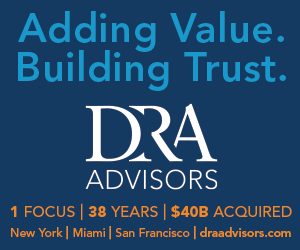PREA Quarterly Departments - Spring 2024

 Brendan Cooper
Brendan CooperTeacher Retirement System of Texas
 Jared Morris
Jared MorrisTeacher Retirement System of Texas
 Elliott Fry
Elliott FryTeacher Retirement System of Texas
 Sam Givray
Sam GivrayTeacher Retirement System of Texas
Public and private real estate valuations periodically diverge, presenting opportunities for real estate investors that have the flexibility to rotate between the two markets. From October 2022 through January 2024, the Teacher Retirement System of Texas (TRS) identified and executed a public real estate strategy during one of these divergence windows. This article presents a case study that highlights the process, market environment, performance, and lessons learned from TRS’s experience.
Introduction
Shortly after the Federal Reserve’s decision to raise interest rates to combat inflation in March 2022, public US REIT valuations began to decline sharply. As measured by the FTSE Nareit Equity REITs Index (FNRE), which excludes telecommunications and timberland stocks, public REIT stock prices fell by 31% in less than six months from their 2022 peak on April 21 through their trough on October 14. In contrast, private real estate market values continued to inch up by 3.9% in 2Q2022, as represented by the appreciation return in the NCREIF Fund Index—Open End Diversified Core Equity (ODCE), before flattening in Q3. Exhibit 1 shows the comparative performance of the ODCE and FNRE from the start of 2022. The performance difference between the two indices began to widen substantially in April.
This spectacular divergence naturally raised the following questions: Were the public markets overshooting, or were private markets lagging? Is there an investment opportunity for private markets investors to tactically move into the public REIT space?
TRS is an approximately $200 billion pension fund representing more than two million public educators across Texas. The mission of TRS is to improve the retirement security of its members by prudently investing and managing the trust assets and delivering benefits that make a positive difference in their lives. The TRS real estate portfolio, targeted at 15% of the trust (approximately $30 billion), comprises a broad spectrum of investment strategies, structures, and geographies.
Historically, TRS has been reluctant to invest in public real estate strategies at scale, primarily because of periodic volatility in public markets that may generate wide deviations from TRS’s private ODCE benchmark. Other than a longstanding externally and actively managed public REIT account comprising 1.1% of the real estate portfolio, public REIT exposure has been limited largely to small positions in commingled, private closed-end funds. Although the real estate team can invest in the public markets, TRS staff expertise is geared toward the private markets, with strategic emphasis on private investment partner and strategy selection, inclusive of targeted concentrations in single assets or portfolios.
Nonetheless, the stark divergence in public and private real estate values warranted attention. In October 2022, several TRS private real estate team members accelerated diligence on designing and implementing a dedicated public US REIT tactical investment strategy.
Strategy
The team initially evaluated three broad options to invest in REITs:
- Externally Managed, Active Strategy: TRS has a range of partners that, for a fee, could execute a REIT strategy by taking concentrated positions in specific property sectors or individual securities. Diligence would involve strategy formation, partner evaluation, and legal structuring. This process would likely consume several months.
- Internally Managed, Active Strategy: TRS staff could buy and sell individual REIT stocks internally. However, the development of such a program would require a multi-month “paper portfolio” stage to prove the thesis, as well as cultivation of investment staff expertise in the public REIT space.
- Internally Managed, Passive Strategy: In contrast to active management, investment in a passive, market-weighted index of US REITs would, with CIO approval, eliminate the paper portfolio requirement and could be implemented quickly. However, on the downside, the strategy would be unable to take concentrated positions in high-conviction companies or sectors.
In October 2022, the SPREAD team believed that timing was the most critical element of the thesis. In the team’s view, the interest rate hikes of prior quarters disproportionately punished public REITs, and this could correct just as quickly as it appeared. The appraisal valuation lag in the ODCE was also anticipated to catch up over the ensuing year. Further, public REIT declines were broad-based across sectors, signaling that the bulk of the recovery opportunity could likely be captured by investment across the entire index. These factors naturally led to the decision to pursue the most time-efficient option: An internal, passive strategy (#3).
Investment Thesis and Framework
All good strategies must have a catchy nickname: TRS named this prospective program Strategic Public REIT Execution and Delivery, or SPREAD. The investment thesis was anchored on achieving relative return to the ODCE benchmark, with a secondary objective of absolute return. SPREAD would additionally serve to buttress existing TRS private real estate assets, which if higher interest rates persisted, would likely experience write-downs over subsequent quarters.
Relative Return
To assess relative values in private and public markets, the SPREAD team used the appraisal cap rates from ODCE properties and contrasted them with implied public cap rates from Green Street Advisors, a real estate research and analytics provider. The public cap rates were applied to the REIT index and weighted by ODCE sectors. In October 2022, these private and public cap rate indicators stood at 3.6% and 6.3%, respectively, presenting a “spread” of 270 basis points.
The next questions arising from the data were these:
- How anomalous was the current cap rate spread? Exhibit 2 presents the history of the spread between the two cap rate indicators and the variation around a five-year moving average as represented by standard deviations. In October 2022, the spread hovered around two standard deviations above the average, which had been the case for only nine total quarters over the prior 20 years.
- How long would it take for the spread to “close”? In each of the prior nine quarters that were cap rate–spread outliers, an investment in the REIT index would have resulted in outperformance (alpha) over the ODCE if held for the subsequent three years, with average aggregate alpha of 52%. In all but one case (1Q2018, when the subsequent two-year period ran into the COVID-19 pandemic), the REIT index investment would have produced alpha over the subsequent two years (average: 40%). Although the one-year horizon was murkier, alpha would have been created across all post–global financial crisis instances (average: 20%). TRS concluded with reasonable confidence that a SPREAD strategy would outperform ODCE if held for one to two years.
Absolute Return
Given that the strategy would be evaluated alongside other private investments, and as a matter of prudent fiduciary duty, the SPREAD team felt that constructing an absolute return framework that would add value to the trust was critical. Because the REIT index represents sectors with positive and negative momentum (e.g., industrial versus office) and a wide band of absolute and relative cap rates, TRS used reasonable, albeit inexact, underwriting assumptions to build up to an absolute return projection.
Exhibit 3 demonstrates the components of the SPREAD program’s expected return. Notably, TRS underwrote zero net operating income (NOI) growth given recessionary fears at the time. The appreciation component assumed that (1) the public-private cap rate spread would revert to the five-year average (1.55% at underwriting), and (2) it would do so by an equal movement in public cap rates (downward) as in private cap rates (upward), i.e., “meeting in the middle.” After applying existing REIT leverage and deducting a “fee drag” that represented average REIT general and administrative expenses, the investment was expected to deliver a 21.5% one-year forward return.
Approval and Deployment
The TRS investment process allows for efficient approval of time-sensitive opportunities. As such, the SPREAD team moved through a series of committees to achieve full approval for a $400 million commitment on December 1, roughly six weeks after diligence was initiated. Although public REIT values had modestly recovered by this point, the spread was still sufficiently large to warrant deployment.
The TRS deployment strategy consisted of $50 million weekly tranches to smooth the investment basis across attractive entry points. SPREAD deal team members met weekly to assess relative return, absolute return, and pricing versus the transaction market as articulated above. Each week’s decision was determined by a majority of the SPREAD team who each elected to deploy or wait. The first $100 million was invested in December 2022, with an additional $200 million deployed in March 2023. The final $100 million was preserved for a potential further REIT drawdown, which proved out in October 2023, during which the remaining capital (less reserves) was then deployed. Exhibit 4 shows the deployment and realization timing of SPREAD investment capital in the orange and green bars, respectively, juxtaposed with the REIT index performance indexed to the initial SPREAD approval in December 2022.
Realization and Performance
The SPREAD team agreed to trigger a discussion around investment realization when the public-private cap rate spread declined to within one standard deviation of the five-year moving average. This occurred first for a brief period in July 2023 and then more persistently in December 2023. The exit discussions were considerably more nuanced and contested than the entry dialogues, primarily revolving around the following:
- Momentum in the public markets around prospective rate cuts driving up REIT stocks, coupled with, subjectively, still-rosy valuations within the ODCE index
- The TRS absolute pricing model indicating a 10.1% one-year go-forward return (as of December 2023), which was comparable to offerings in the private transactions market
- “Did we achieve what we sought to do?” With a positive investment outcome and significant alpha already achieved, is the reward of squeezing out the final spread convergence worth the risk?
Ultimately, TRS elected to sell two-thirds of the NAV in late December 2023 and the remaining one-third in late January 2024.
The SPREAD team was pleased with the investment results: the outcome yielded a 17.1% internal rate of return (IRR) with $47 million of total profit. The average invested capital across the hold period was $246 million. Exhibit 5 shows the relative return performance for calendar year 2023 and across the entire hold (“since inception”) period, which incorporated some days in December 2022 and January 2024.
The realized returns of the SPREAD program compared favorably both to the REIT index return—the deployment and realization timing strategy added excess return—and to the ODCE private benchmark. If SPREAD capital had been invested instead into ODCE at the same time intervals and amounts, the investment would have lost $35 million. This infers $82 million of notional alpha.
On an absolute return basis, SPREAD returns slightly lagged underwriting because of two primary factors. First, the cap rate spread closed primarily through private cap rate expansion (3.6% moving to 4.5%) versus public cap rate compression (6.3% moving to 6.2%). Second, TRS did not “ride out” the full spread compression, fully exiting with the cap rate spread still 22 basis points above the five-year moving average (0.33x standard deviation). These factors were partially offset by positive NOI growth of 4.4% across public REITs, versus the TRS underwritten assumption of 0%.
Lessons and Takeaways
Throughout this inaugural tactical REIT investment process, the TRS investment team learned several lessons that may be useful for other institutional investors contemplating similar programs.
- Importance of Timing: Put the plumbing in place before the opportunity presents itself. Returns from the SPREAD program could have been enhanced if capital had been ready in October 2022 instead of December 2022. Moreover, the timing dynamics are critical in a valuation-based, short-term framework such as SPREAD. Set up specific, quantitative metrics to keep team members aligned and investment discipline maintained.
- Importance of Absolute Return: Private markets investors often zero in on a single return metric: base case net IRR. Even if the primary return objective is relative, strategies will inevitably be judged prospectively and retrospectively by absolute return. Using reasonable assumptions, absolute return models are critical in communicating the goals and metrics of the opportunity.
- Flexible Allocation and Governance: TRS is fortunate to have an efficient investment approval process with clear, written policies, as well as strong executive support for unique strategies—such as SPREAD—that are outside the realm of typical private fund commitments. Having flexibility around asset class concentration is also critical. In November 2022, the TRS real estate portfolio made up 17% of the trust’s value versus a 15% target. This overallocation naturally occurs in periods of dislocations (e.g., denominator effect); thus, appetite for further investment must be proactively screened and allowed for on a case-by-case basis.
- Difference of Public Markets Arena: Private markets investors are typically unfamiliar (or unconcerned) with key characteristics of the public markets, such as tracking errors, rebalancing policies, and daily trading liquidity, among others. TRS executives particularly focused on the opportunity cost of SPREAD by analyzing the “funding portfolio,” or the pool of existing trust investment securities that would be sold to fund SPREAD capital. Additionally, the emotional whims of the public markets can be brutally draining for those used to steady, quarterly marks.
Capitalizing on public-private real estate pricing divergence can prove to be a fruitful endeavor for investors seeking relative and absolute total returns. With its demonstrated success, the TRS real estate team now has an additional tool to capitalize on potential public-private valuation discrepancies in the future. For other investors, the SPREAD program illustrates the process, rationale, and potentially successful outcome for pursuing a passive REIT strategy with a clear, defined investment framework. 
Brendan Cooper and Jared Morris are Directors, Elliott Fry is a Principal, and Sam Givray is a Senior Associate at Teacher Retirement System of Texas.
This article has been prepared solely for informational purposes and is not to be construed as investment advice or an offer or a solicitation for the purchase or sale of any financial instrument, property, or investment. It is not intended to provide, and should not be relied on for, tax, legal, or accounting advice. The information contained herein reflects the views of the author(s) at the time the article was prepared and will not be updated or otherwise revised to reflect information that subsequently becomes available or circumstances existing or changes occurring after the date the article was prepared.


 About PREA
About PREA





















